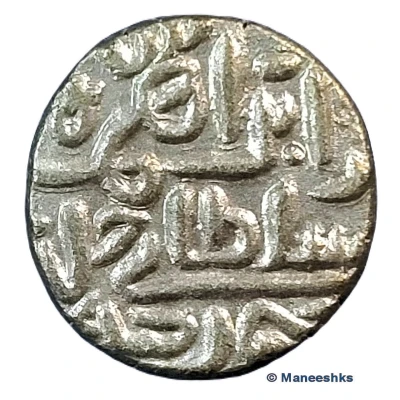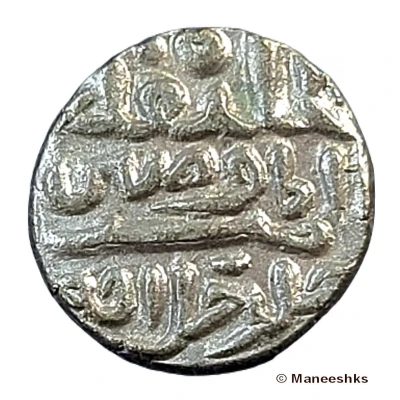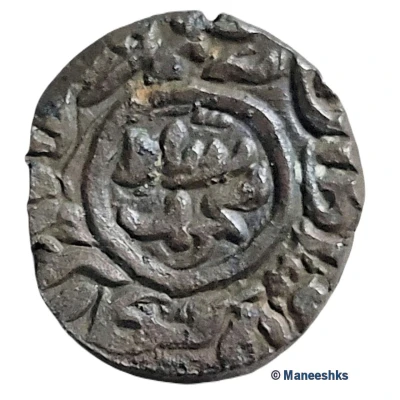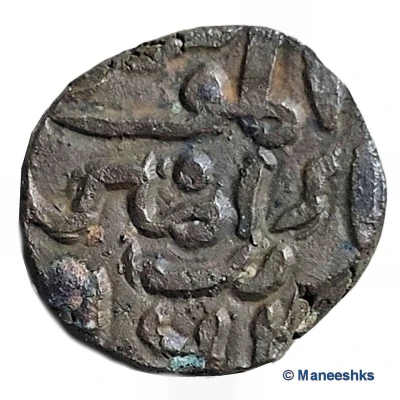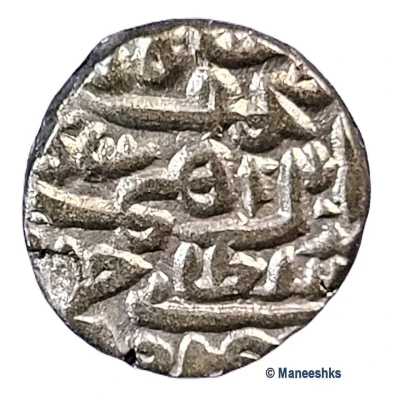
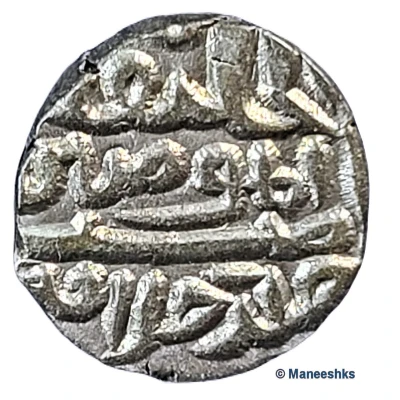

© Maneeshks (CC BY-NC)
32 Rati Nasir Al-Din Mahmud Shah ND
| Billon (32 Rati) | 3.7 g | 14.95 mm |
| Issuer | Sultanate of Jaunpur (Indian Sultanates) |
|---|---|
| Type | Standard circulation coin |
| Years | 1440-1456 |
| Value | 32 Rati |
| Currency | Tanka (1394-1479) |
| Composition | Billon (32 Rati) |
| Weight | 3.7 g |
| Diameter | 14.95 mm |
| Thickness | 3.12 mm |
| Shape | Round (irregular) |
| Technique | Hammered (Weight varies 3.6-3.7g) |
| Demonetized | Yes |
| Updated | 2024-10-05 |
| Numista | N#370422 |
|---|---|
| Rarity index | 93% |
Reverse
Al-khalifa amir al-mu'minin khulidat khilafatahu
Script: Arabic
Edge
Plain
Comment
This coin does not have a date.The Jaunpur Sultanate (Persian: سلطنت جونپور) was a Persianate Muslim kingdom in northern India between 1394 and 1479, ruled by the Sharqi dynasty. It was founded in 1394 by Khwajah-i-Jahan Malik Sarwar, an eunuch slave and former wazir of Sultan Nasiruddin Muhammad Shah IV Tughluq, amidst the disintegration of the Delhi Sultanate's Tughlaq dynasty. Centred in Jaunpur, the Sultanate extended authority over Awadh and a large part of the Ganges-Yamuna Doab. It reached its greatest height under the rule of Sultan Ibrahim Shah, who also vastly contributed to the development of Islamic education in the Sultanate. In 1479, Sultan Hussain Khan was defeated by the forces of Afghan ruler Bahlul Lodi, Sultan of the Lodi dynasty of the Delhi Sultanate, which abruptly brought an end to independent Jaunpur and its reabsorption into the Delhi Sultanate.
Interesting fact
One interesting fact about this coin is that it was issued during the reign of Nasir Al-Din Mahmud Shah, who was the last ruler of the Jaunpur Sultanate. Despite being the last ruler, his coinage is relatively rare and highly sought after by collectors, making it a valuable piece of history.
